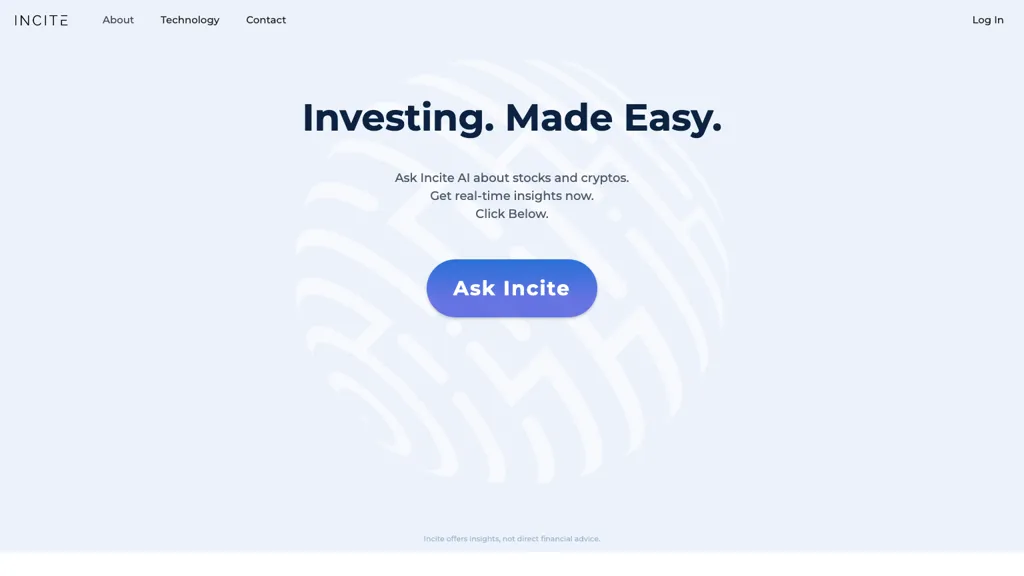20 Great Tips On Deciding On AI Stock Predictions Analysis Websites
Wiki Article
Top 10 Tips On Assessing The Ai And Machine Learning Models Of Ai Stock Predicting/Analyzing Trading Platforms
In order to obtain accurate, reliable and useful insights it is essential to check the AI models and machine learning (ML). Models that are overhyped or poorly constructed can lead flawed predictions, and even financial losses. Here are the 10 best strategies for evaluating AI/ML models that are available on these platforms.
1. Learn about the purpose of the model and its approach
Cleared objective: Define the objective of the model, whether it is to trade at short notice, investing long term, sentimental analysis, or managing risk.
Algorithm transparency - Check to see if there are any public disclosures regarding the algorithms (e.g. decision trees or neural nets, reinforcement, etc.).
Customizability - Determine whether you can modify the model to meet your strategy for trading and your risk tolerance.
2. Review the performance of your model using metrics
Accuracy Check the accuracy of the model's predictions. Do not rely solely on this measure, however, because it can be misleading.
Accuracy and recall - Examine the model's capability to recognize true positives and minimize false positives.
Risk-adjusted results: Determine the impact of model predictions on profitable trading after accounting risks (e.g. Sharpe, Sortino, etc.).
3. Test the model using Backtesting
Backtesting the model by using previous data lets you test its performance against prior market conditions.
Tests on data not used for training To avoid overfitting, test the model using data that was not previously used.
Scenario-based analysis: This involves testing the accuracy of the model under different market conditions.
4. Make sure you check for overfitting
Overfitting signals: Watch out models that do extraordinarily well with data training, but not so well on data that is not seen.
Regularization: Determine if the platform is using regularization methods such as L1/L2 and dropouts to avoid excessive fitting.
Cross-validation: Ensure the platform uses cross-validation to assess the model's generalizability.
5. Examine Feature Engineering
Relevant Features: Examine to determine if the model has relevant characteristics. (e.g. volume prices, price, technical indicators as well as sentiment data).
Choose features carefully Make sure that the platform will contain statistically significant information and not redundant or irrelevant ones.
Updates to features that are dynamic: Determine whether the model will be able to adjust to market changes or new features over time.
6. Evaluate Model Explainability
Interpretability (clarity): Be sure to ensure whether the model can explain its predictions clearly (e.g. value of SHAP or the importance of features).
Black-box model: Beware of platforms which make use of models that are overly complex (e.g. deep neural networks) without describing the the tools.
User-friendly insights : Check whether the platform is able to provide actionable information in a form that traders can be able to comprehend.
7. Check the ability to adapt your model
Market conditions change - Check that the model can be adapted to changing market conditions.
Examine if your system is updating its model regularly by adding new data. This will increase the performance.
Feedback loops: Ensure that the platform includes feedback from users as well as real-world outcomes to refine the model.
8. Check for Bias or Fairness
Data bias: Ensure the training data is true to market conditions and free of biases (e.g., overrepresentation of specific sectors or time periods).
Model bias: Determine if are able to actively detect and reduce biases that exist in the forecasts of the model.
Fairness: Ensure the model doesn't disproportionately favor or disadvantage certain sectors, stocks or trading strategies.
9. Examine the Computational Effectiveness
Speed: See if you can make predictions using the model in real-time.
Scalability: Find out whether the platform has the capacity to handle large amounts of data that include multiple users without performance degradation.
Resource usage: Make sure that the model is optimized to make the most efficient utilization of computational resources (e.g. GPU/TPU usage).
10. Transparency and Accountability
Model documentation: Ensure that the platform has a detailed description of the model's structure, training process, and the limitations.
Third-party Audits: Determine if the model was independently checked or validated by other organizations.
Make sure there are systems in place to detect errors and failures of models.
Bonus Tips
User reviews Conduct research on users and study case studies to determine the performance of a model in the real world.
Free trial period: Try the accuracy of the model and its predictability by using a demo or a free trial.
Customer support: Ensure the platform offers a solid assistance for model or technical issues.
These suggestions will assist you to evaluate the AI and machine learning models employed by platforms for prediction of stocks to ensure they are reliable, transparent and in line with your goals for trading. Take a look at the best recommended you read on ai investing app for site advice including best ai stock trading bot free, ai investing, ai stock picker, chart ai trading assistant, using ai to trade stocks, ai investment app, ai for investing, best ai trading app, best ai trading software, incite and more.

Top 10 Tips On Assessing The Trial And Flexibility Of Ai Platform For Analyzing And Predicting Stocks
It is essential to look at the flexibility and trial features of AI-driven stock prediction and trading platforms prior to you decide to sign up for a service. Here are 10 top tips on how to evaluate the following factors:
1. You can try a no-cost trial.
Tip - Check to see if the platform allows you to try out its features for free.
Why: The trial is an excellent method to experience the platform and evaluate the benefits without risking any money.
2. Duration and Limitations of the Trial
TIP: Take a look at the duration of your trial as well as any limitations that you may face (e.g. limited options, or access to information).
The reason is that understanding the constraints of trials can help you assess if the test is complete.
3. No-Credit-Card Trials
Find trials that do not require credit card in advance.
The reason is that it reduces the possibility of unexpected charges and makes it much easier to opt out.
4. Flexible Subscription Plans
TIP: Make sure that the platform offers flexibility in subscriptions (e.g. quarterly annual, monthly, etc.)) and clear pricing different tiers.
Why: Flexible plans allow you to select a commitment level that suits your budget and needs.
5. Customizable Features
Look into the platform to determine whether it permits you to alter certain features such as alerts, trading strategies or risk levels.
Why: Customization allows for the platform’s adaptation to your individual requirements and preferences in terms of trading.
6. It is simple to cancel an appointment
Tip: Assess how easy it is to cancel or downgrade a subscription.
The reason: A simple cancellation process will ensure that you're not bound to a contract that isn't working for you.
7. Money-Back Guarantee
Tip - Look for sites that offer a guarantee of money back within a certain period.
What's the reason? You've got an extra security net in case you don't like the platform.
8. Access to Full Features During Trial
TIP: Make sure the trial offers access to the core features.
What's the reason? You can make an an informed choice by testing every feature.
9. Customer Support During Trial
Tips: Evaluate the quality of assistance provided by the company throughout the trial.
You can make the most of your trial experience by getting solid assistance.
10. After-Trial Feedback Mechanism
Examine whether the platform is asking for feedback from users following the test to help improve its services.
What's the reason? A platform that values user feedback will be more likely to grow and meet user needs.
Bonus Tip Optional Scalability
As your trading activity grows and you are able to increase your trading volume, you might need to modify your plan or add additional features.
Before committing to any financial obligation, carefully evaluate these trial and flexibility options to decide if AI stock trading platforms and predictions are the most appropriate for your needs. Read the best ai investment tools info for blog recommendations including ai tools for trading, ai for trading stocks, ai copyright signals, ai software stocks, best ai for stock trading, can ai predict stock market, ai trading tool, free ai stock picker, ai tools for trading, ai in stock market and more.
